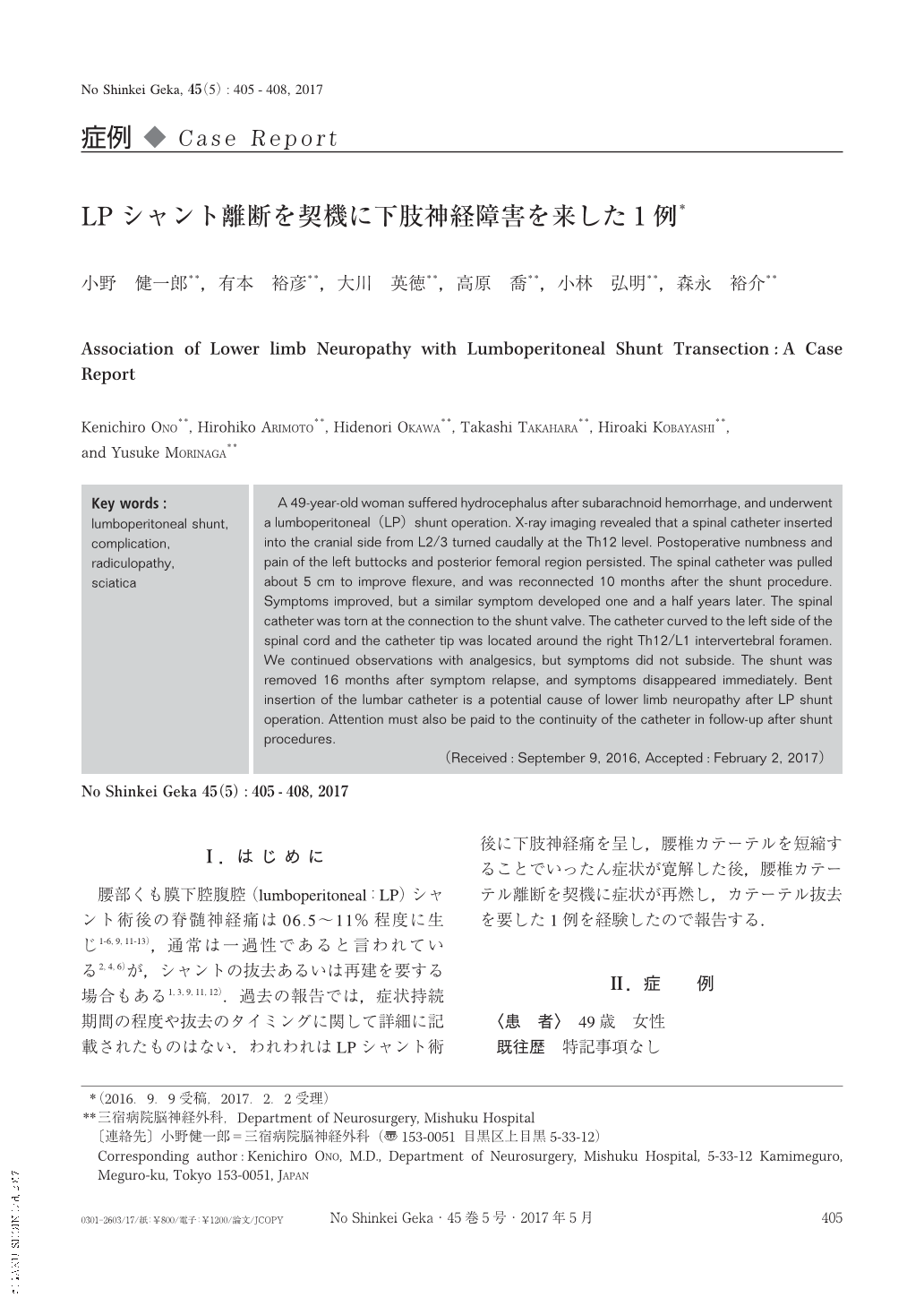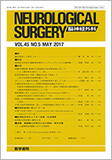Japanese
English
- 有料閲覧
- Abstract 文献概要
- 1ページ目 Look Inside
- 参考文献 Reference
Ⅰ.はじめに
腰部くも膜下腔腹腔(lumboperitoneal:LP)シャント術後の脊髄神経痛は06.5〜11%程度に生じ1-6,9,11-13),通常は一過性であると言われている2,4,6)が,シャントの抜去あるいは再建を要する場合もある1,3,9,11,12).過去の報告では,症状持続期間の程度や抜去のタイミングに関して詳細に記載されたものはない.われわれはLPシャント術後に下肢神経痛を呈し,腰椎カテーテルを短縮することでいったん症状が寛解した後,腰椎カテーテル離断を契機に症状が再燃し,カテーテル抜去を要した1例を経験したので報告する.
A 49-year-old woman suffered hydrocephalus after subarachnoid hemorrhage, and underwent a lumboperitoneal(LP)shunt operation. X-ray imaging revealed that a spinal catheter inserted into the cranial side from L2/3 turned caudally at the Th12 level. Postoperative numbness and pain of the left buttocks and posterior femoral region persisted. The spinal catheter was pulled about 5 cm to improve flexure, and was reconnected 10 months after the shunt procedure. Symptoms improved, but a similar symptom developed one and a half years later. The spinal catheter was torn at the connection to the shunt valve. The catheter curved to the left side of the spinal cord and the catheter tip was located around the right Th12/L1 intervertebral foramen. We continued observations with analgesics, but symptoms did not subside. The shunt was removed 16 months after symptom relapse, and symptoms disappeared immediately. Bent insertion of the lumbar catheter is a potential cause of lower limb neuropathy after LP shunt operation. Attention must also be paid to the continuity of the catheter in follow-up after shunt procedures.

Copyright © 2017, Igaku-Shoin Ltd. All rights reserved.


